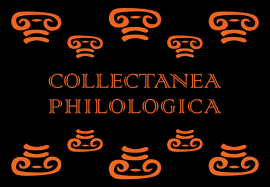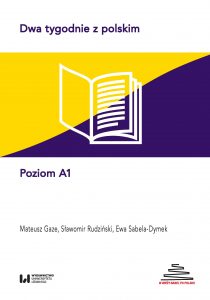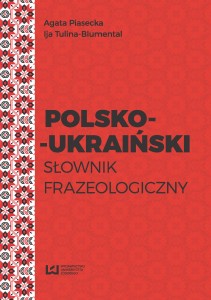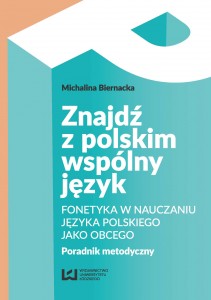Collectanea Philologica 25: Romanorum Hiberumque Conexio Per Saecula Firmissima
Opublikowano: 19 grudnia 2022

Profil merytoryczny “Collectanea Philologica” od 1995 roku aż do dziś określa tematyka związana z szeroko pojętą literaturą, językiem, historią, sztuką i filozofią świata starożytnego oraz recepcją antyku w kulturze nowożytnej. W czasopiśmie publikowane są artykuły naukowe dotyczące, obok kultury starożytnej Grecji i Rzymu, także grecko- i łacińskojęzycznych dzieł, w tym dzieł literatury chrześcijańskiej, które powstały w Polsce i innych krajach europejskich doby średniowiecza, odrodzenia czy baroku. W periodyku ukazują się również przekłady literatury greckiej i łacińskiej na język polski.
Materiał w każdym tomie dzielony jest na trzy podstawowe dziedziny: hellenistyka, latynistyka, recepcja. W zależności od profilu tematycznego danego tomu, podział może przebiegać na innych płaszczyznach: literatura, językoznawstwo, filozofia, historia i sztuka. Odrębną część stanowi dział poświęcony recenzjom publikacji związanych z profilem czasopisma.
Czasopismo posiada zasięg międzynarodowy. Publikowane są w nim artykuły w języku polskim, łacińskim i językach kongresowych. Wszystkie artykuły i recenzje posiadają anglojęzyczne streszczenia i słowa klucze w języku artykułu i po angielsku. W skład Redakcji oraz Rady Naukowej wchodzą uznani profesorowie, reprezentujący polskie i zagraniczne ośrodki naukowe.
Redaktor Naczelną “Collectanea Philologica” jest Prof. Jadwiga Czerwińska.
W numerze:
Lucjusz Anneusz Seneka – niewdzięczny syn ziemi hiszpańskiej
Zbigniew Danek
The author of this article discusses the question to what extent Lucius Annaeus Seneca – born in Hispania, and today exceptionally venerated in this country as a precursor of the “Spanish” mentality – felt he belonged to this land, and to what extent his feelings towards it were expressed in his writings. An analysis of his creative output leads to the conclusion that he felt little affection for the land of Hispania, since in his writings there are almost no references to it, and perhaps the only trace of his connection with his native country is his youthful epigram Ad Cordubam, in which, however, he shows more warmth towards himself than towards the city. The perceived lack of any more significant declarations of “Spanish” nationality, however, does not so much testify to his pettiness as to his stoic distance from the ethnic and political barriers that divide the community of mankind that constitutes a whole for him.
Heracles in the Iberian Peninsula
Adriana Grzelak-Krzymianowska
The story of Herculesʼ achievements, like many others in Greek mythology, has undergone various changes since Hesiodʼs early transmissions helped to consolidate the essential elements of the myth and its characteristics. With the translocation of myths from Caucasian Iberia to Western Iberia, certain places, characters and events associated with the land were also transferred. The Fortunate Islands, the Garden of Hesperides, the place of the 10th and 11th labours of Hercules have been relocated, and the origin and meaning of the pillars set up by the hero have been identified and interpreted. The aim of this article is to show how one of these myths, namely that of Hercules and Geryon, was shaped in the classical and later periods. The transformation of three elements of this myth will be analysed: its location, the figure of Geryon and the description of Herculesʼ achievements.
Wątki hiszpańskie w twórczości Wawrzyńca Korwina (1465–1527)
Robert K. Zawadzki
In the article Robert K. Zawadzki relates how Wawrzyniec Korwin, a little – known Old – Polish writer described the Iberian peninsula in his astronomical treatise Cosmographia dans manuductionem in tabulas Ptolemaei. This author produced a specific picture of Spain that shared affinity with the Roman and Greek writers’ literary manner of writing about this country. The ancient literature had tended to see Spain as a land of prosperity and a district in which gold could be found as a mineral in the rivers. Korwin adopted this view of Spain. A separate section of Spanish threads in his dissertation are the Roman writers from the Iberian peninsula. The Polish author evokes the figure of Seneca and Lucan to quote fragments of the most important works of these writers. Bringing together Korwin’s remarks and ancient texts which he uses, RKZ demonstrates that the Korwin’s description of Spain although seen by some as an anachronism achieved its aim, it persuaded audiences of the magnificence of Spain.
Agata Konrad
Members of the Society of Jesus, as didacticians (and humanists), were aware of the importance of the memoria for the delivery of speech. For this reason, they did not omit this opus oratoris in rhetorical studies intended for their students. An example of this is the textbook De arte rhetorica libri tres ex Aristotele, Cicerone, et Quintiliano praecipue deprompti by the Portuguese Jesuit Cipriano de Soarez (1524–1593). The aim of the research was to trace the influence of Rhetorica ad Herennium, De oratore by Marcus Tulius Cicero and Institutio oratoria by Marcus Fabius Quintilian on the rhetorical theory presented by Soarez concerning ars memorativa. An attempt was also made to determine what the teaching of rhetoric looked like in Jesuit colleges, which was helped by the Ratio studiorum treatise (1599). In the course of comparative analysis, it was found that the Portuguese teacher mainly drew on Marcus Fabius Quintilian’s Institutio oratoria.
Maria Judyta Woźniak
The article is a voice in the discussion on contemporary translations of medieval Latin poetry: accepted and possible ways of translating Latin poetry for todayʼs readers, situated within the field of translation studies and poetics – it is part of the research on the reception of the ancient tradition, of which translations are a particular manifestation. The subject of interest is a poem from the medieval collection Carmina Rivipullensia: the only existing collection of Latin love lyric of the Middle Ages from Spain. It testifies to the very lively presence of the Latin poetic tradition in the Iberian Peninsula at that time.
This article presents a translatorʼs proposal, accompanied by a commentary, in which arguments for the chosen solutions are indicated. The aim of the article is to present the translatorʼs ideas, mainly concerning the chosen strategy for the translation of the rhymes in Latin medieval poetry, which are an important feature of the Songs.
Ewa Śmiłek
The classical legacy in contemporary Spanish poetry is evident, especially in the creation of Aurora Luque (Almería 1962), one of the best representatives of the neoclassical and culturalist trend in Hispanic poetry. This article aims to show the two aspects of her poetry: the recovery of the Greco-Roman tradition and the female voice that reconciles aesthetics and morality. To defend the feminine voice of everyday life, the poet reinvents and modifies the classical tradition offering us a new vision of mythology, topoi, themes and motifs from Antiquity.
Sobre los factores externos e internos de la penetración de los germanismos en la península ibérica
Wiaczesław Nowikow
Sobre el papel del latín y el concepto de latinismo desde la perspectiva española y polaca
Aneta Pawlak
The objective of the article is twofold. On the one hand, it aims to briefly outline the history of the Spanish and the Polish language in order to compare the role of Latin in the formation of both languages. On the other hand, it focuses on the lexicological terminology related to Latin-derived words, with special focus on Latinisms. In addition to the lexicological nomenclature, classifications of Latinisms are also compared. The differences detected in the contrastive analysis mainly concern the lack of heritage words from Latin in Polish and the different concept of doublets in Spanish and Polish. This, in turn, is due to the different type of role of Latin in both languages in its early stages of formation. The article ends with the conclusions and a brief reflection about neocultisms.
Amfory w ekspozycji Muzeum Archeologicznego w Murcji (Hiszpania)
Iwona Modrzewska-Pianetti
This article deals with ancient amphorae in the exhibition of the Archaeological Museum of Murcia (Spain). So far, the amphorae have only had inventory cards and there has been no typological-chronological study of them. Each of the 8 amphorae is a different type and purpose. These are finds from various locations in the Region of Murcia. The aim of the study is to supplement museum data and to show the Polish reader amphorae of local production and those imported to this region of Spain in the ancient period.
Jordi Pérez González, Javier Heredero Berzosa, Antonio José Aguilera Martín
Within the complex system that once formed part of the epigraphic ensemble that accompanied these amphorae, we highlight the particular study of the painted marks known as tituli picti in the delta position of the olive oil amphorae from Baetica, Dressel 20. Here we address a singular fact, only detectable through the visualization of large data sets, indicating the existence of the endorsement in delta of the amount expressed in alpha throughout the years of the Antonine reform. If until now it was believed to be something fortuitous, or a scribeʼs error, now it could be considered, due to its structure and the cases exposed, a regulated script.
Esther Rodrigo Requena, Núria Romaní Sala
The aim of this paper is to provide data for the knowledge of the strategies followed by Rome to take effective control of the Citerior Province of Hispania during the 2nd century BC. We will analyse two settlements of the north-eastern region, namely Puig Castellar de Biosca (Province of Lleida) and Can Tacó (Province of Barcelona), that will serve to gauge the degree of Roman territorial implementation and under what forms this power will be consolidated.
The period that interests us ranges from the end of the second Punic-Roman conflict to the first decades of the 1st century BC. It was a slow process in which Rome did not have a pre-established plan of action but was adapting its strategy to the different circumstances and stages of the conquest. The end of all this was the final control and pacification of the country.
While all the researchers have a common understanding that during the first phase of control of the Hispanic territories the army played the most important role, the main discrepancies are related to the nature and characteristics of this occupation. The main focus in this discussion has its centre in the need to define how the Roman Army embodied his presence in Hispania during the first century of conquest and to characterise the different settlements in order to identify and determine with precision their military character or their connection with the process of conquest without a strictly military function.
Tomasz Ładoń
The author of the article deals with three issues. Firstly, he defines the reasons and nature of the changes applied by Sertorius in the treatment of the natives immediately after taking the governorship in Spain. Secondly, he presents Sertorius’ efforts to gain the support of the Iberian elite. Thirdly, he points to the reasons for his support among the broad masses of the Iberians.
The author determines that Sertorius’ leading a new, often pioneering, policy towards the Iberian people had one main goal: to provide him with the greatest possible support for the Iberians, which in effect was to lead to mass joining of the natives in the ranks of his army. This policy included granting the natives privileges in the form of exemptions from taxes and from the duty of garrisoning military forces, promoting the Iberian elite and even granting them Roman citizenship. Sertorius did not avoid the use of political propaganda, in which he did not differ from other leaders of his time: Sulla, Pompey and Metellus. These measures ensured him immense popularity. As a result, at the height of the war, tens of thousands of soldiers fought in the Marian ranks and controlled most of the Iberian Peninsula.
Movilidad y redes de influencia de los seviros Augustales en Baetica
Alberto Barrón Ruiz de la Cuesta
The seviratus Augustalis was an urban institution of semi-official nature which was mainly held by wealthy freedmen. It appeared in Italy in the end of the 1st century BC and spread fast to the Latin-speaking provinces of the Roman Empire. It had an essential role in the growth of the economic and commercial activities of several cities till the 3rd century AD. This position has been studied by many scholars through its abundant epigraphic evidences. The scarcity of mentions to the seviri Augustales in the Roman literature has impeded the elucidation of its concrete functions. It has clear similarities with some priesthoods and urban magistratures, but the seviri Augustales lacked the status and the official nature of them. This unofficial essence was the point which made possible the development of the seviratus Augustalis as a tool for the social promotion of rich freedmen, whose admission to magistratures and priesthoods was forbidden.
The goal of the current analysis is to identify the economic and institutional connections between the seviri Augustales of Baetica, both inside and outside this Hispanic province. The preserved epigraphic evidence illustrates the diffusion of this institution in the south of Roman Hispania and the importance of the economic route through the course of the Guadalquivir River, as well as the commercial contacts between diverse coastal cities of Hispania and other Roman regions.
Conexiones culturales entre Roma y Barcino: una visión a través de la iconografía de las lucernas
Laia de Frutos Manzanares
Roman lamps were one of the few daily-use objects that could have been usually decorated, thanks to the free space they had on their central discuses, offering a wide variety of figurative motifs. Such richness of elements and details permits to study their iconography as a reflection of Roman imaginary and daily life. About Iberian Peninsula, it is possible to observe how the Roman culture and traditions arrived and started to be introduced in this area through the analysis of their decorations.
This paper will regard the specific situation of ancient Barcino (Barcelona), a paradigmatic case in respect of the application of that kind of analysis in order to better understand the Roman society that lived there.
Becoming Roman? Two-Sided Stelae in Lucus Augusti and its Hinterland
Natalia Gómez García
In this article we analyze the two-sided stelae of Lucus Augusti and its hinterland, unique pieces throughout the Roman Empire, with the aim of compiling the information we have about them and analyzing them from the perspective of postcolonial romanization theories. To this end, Bourdieuʼs theory of habitus is fundamentally used, understanding habitus as a generator of principles of social behavior. The use of the toga in the representations of these stelae and their link with Roman citizenship are key to understanding who commissioned these funerary monuments, as well as the correct interpretation of the themes on the reverse provide us with new data. The analysis of the granite blocks allows us to know that they were not large stelae or with an epigraphic text that is now lost, but that it was a conscious choice which they did not have text rather images on both sides. The two-sided stelae are the reflection of a local custom, that is, part of a new hybrid culture: the provincial Galician-Roman culture.
Późnoantyczna Tarraco. Kontynuacja i zmiana w przestrzeni miejskiej (III–V wiek)
Anna Zimnowodzka
Established in the 3rd century BCE, Tarraco reached its heyday in the 2nd century (AD). In the second half of the 2nd and at the beginning of the following century, despite the noticeable progressive recession of the city (abandonment of the theater and the nymphaeum, decrease of artistic activities), selected buildings and districts in the city were still flourishing (including the port area, the temple of Augustus and the amphitheater). The process of transformation of the city proceeded slowly, even in the 4th century, when the forum of the colonies was abandoned, some buildings, including the Concilium Provinciae Hispaniae Citerioris, continued to perform their functions. In the 5th century, as evidenced by epigraphy, a part of the square was still used for representative purposes, with the rest of it being replaced by residential buildings. The circus was still in use until the middle of the 5th century. The demolition, in the second half of the 5th century, of the temple of Augustus, which dominated the city, and the gradual erection of Christian basilicas, first outside the city and from the 6th century onwards, also within it, marked the end of an era in the history of the city.
Dorota Gorzelany-Nowak, Patrycja Matusiak
Livy and Polybius note that after the conquest of New Carthage, Scipio Africanus the Elder freed Spanish hostages, among whom was Allucius’ fiancée of extraordinary beauty. Not only did Scipio not accept her as a gift, but he summoned her parents and fiancé from her country, returned her to them for free and gave away as a wedding gift the gold intended for her redemption. The motif of the “continence of Scipio”, which was a political strategy aimed at gaining allies and ensuring their friendship with the Romans, was widely reflected in literature, opera and, above all, painting, starting from the sixteenth century. In the article we present works created in the Venetian artistic environment that have not been analyzed before.
Komentarze
Ten post dostępny jest także w języku: angielski





